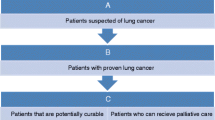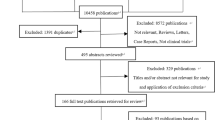Abstract.
Management of solitary pulmonary nodules (SPNs) of up to 3 cm was modelled on decision analysis comparing "wait and watch", transthoracic needle biopsy (TNB), exploratory surgery and full-ring dedicated positron emission tomography (PET) using fluorine-18 2-fluorodeoxyglucose (FDG). The incremental cost-effectiveness ratios (ICERs) were calculated for the main risk group, a cohort of 62-year-old men, using first "wait and watch" and second exploratory surgery as the baseline strategy. Based on published data, the sensitivity and specificity of FDG-PET were estimated at 0.95 and 0.80 for detecting malignancy in SPNs and at 0.74 and 0.96 for detecting metastasis in normal-sized mediastinal lymph nodes. The costs quoted correspond to reimbursement in 1999 by the public health provider in Germany. Decision analysis modelling indicates the potential cost-effectiveness of the FDG-PET strategy for management of SPNs. Taking watchful waiting as the low-cost baseline strategy, the ICER of PET [3218 euros (EUR) per life year saved] was more favourable than that of exploratory surgery (4210 EUR/year) or that of TNB (6120 EUR/year). Changing the baseline strategy to exploratory surgery, the use of PET led to cost savings and additional life expectancy. This constellation was described by a negative ICER of –6912 EUR/year. The PET algorithm was cost-effective for risk and non-risk patients. However, the ICER of PET as the preferred strategy was sensitive to a hypothetical deterioration of any PET parameters by more than 0.07. To transfer the diagnostic efficacy from controlled studies to the routine user and to maintain the cost-effectiveness of this technology, obligatory protocols for data acquisitions would need to be defined. If the prevalence of SPNs is estimated at the USA level (52 per 100,000 individuals) and assuming that multiple strategies without PET are the norm, the overall costs of a newly implemented PET algorithm would be limited to far less than one EUR per member of the public health provider in Germany.
Similar content being viewed by others
Author information
Authors and Affiliations
Additional information
Received 2 May and in revised form 12 June 2000
Electronic Publication
Rights and permissions
About this article
Cite this article
Dietlein, M., Weber, K., Gandjour, A. et al. Cost-effectiveness of FDG-PET for the management of solitary pulmonary nodules: a decision analysis based on cost reimbursement in Germany. Eur J Nucl Med 27, 1441–1456 (2000). https://doi.org/10.1007/s002590000324
Published:
Issue Date:
DOI: https://doi.org/10.1007/s002590000324




